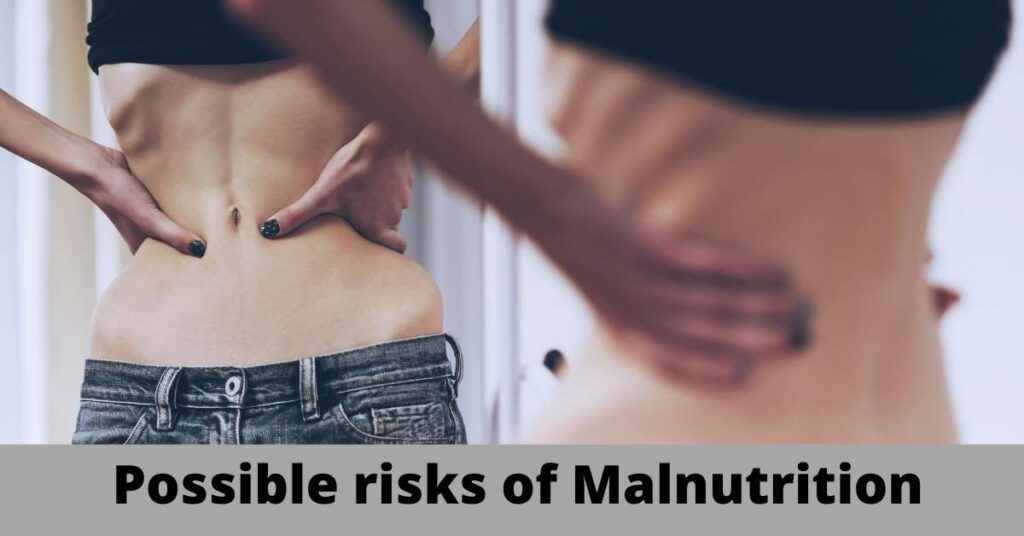Definition
Malnutrition is a disorder that occurs when the body is deprived of vitamins, minerals, and other nutrients required to sustain healthy tissues and organ function.
People who are either undernourished or over nourished can develop malnutrition. In the United Kingdom, dietary imbalances cause more malnutrition than nutritional deficits.
When vital nutrients are not sufficiently consumed or are lost more quickly than they can be supplied, undernutrition results. Overeating, eating the wrong stuff, not exercising enough, and taking excessive amounts of vitamins or other nutritional supplements all contribute to overnutrition. Being more than 20% overweight or consuming a diet high in fat and salt both raise the risk of overnutrition.
Nursing Revalidation provides best online course for Nutrition and Hydration.
What are five causes of malnutrition?
Unfortunately, malnutrition still occurs more frequently in wealthy countries in areas where there is poverty, social isolation, and drug abuse. However, the majority of adult malnutrition is linked to disease and the five major causes of malnutrition are:
- Dietary intake
- Malabsorption
- Increased losses or altered requirements
- Energy expenditure
- Alcoholism
Dietary intake
Reduced food intake is likely the single most significant etiological component in disease-related malnutrition. This is hypothesized to happen because changes in cytokines, glucocorticoids, insulin, and insulin-like growth factors reduce the sensation of hunger. 6 Failure to provide hospital patients with regular, nourishing meals in an atmosphere that shields them from ordinary clinical activity and where they are provided with help and support with feeding when necessary may exacerbate the issue.
Malabsorption
Malabsorption is a distinct risk factor for weight loss and malnutrition in those with intestinal failure and those having abdominal surgery.
Increased losses or altered requirements
Patients may experience excessive and/or particular nutrient losses in various situations, such as enterocutaneous fistulae or burns; their nutritional needs are typically extremely different from normal metabolism.
Energy expenditure
It was thought for many years that increased energy expenditure was predominantly responsible for disease-related malnutrition. There is now clear evidence that in many disease states total energy expenditure is actually less than in normal health. The basal hypermetabolism of disease is offset by a reduction in physical activity, with studies in intensive care patients demonstrating that energy expenditure is usually below 2,000 kcal/day. The exception is patients with major trauma, head injury or burns where energy expenditure may be considerably higher, although only for a short period of time.
Alcoholism
Alcoholism can cause pancreas damage over the long term and gastritis. It may be challenging to:
- digest food
- absorb vitamins
- generate hormones that control metabolism
Alcohol has calories, so a person who drinks it might not feel hungry later. As a result, they could not consume enough nutritious food to give their bodies the nutrients they need.
Nursing Revalidation provides best online course for Nutrition and Hydration.
Diseases caused by malnutrition
Malnutrition causes following diseases:
Kwashiorkor
Kwashiorkor is a protein deficiency disorder characterized by a chronic lack of protein or of high-quality protein. The body swells as a result of kwashiorkor, especially the hands, feet, and face. Hair may become light colored or depigmented to a reddish yellow tone and fall out in parts, and the skin may develop dry areas that eventually peel off.
Marasmus
The significant lack of protein and calories in the diet causes marasmus. Due to the following development of kwashiorkor in miasmic youngsters, it is not just a result of calorie deficit. Loss of body weight and failure to acquire weight, body fat depletion, and withered muscles are some of the prevalent indications and symptoms. A kwashiorkor infant is flabby with edoema or swelling in the body, while a miasmic youngster is distinguished by their slender, lean, skinny appearance.
A high-calorie, high-protein diet consisting of milk,, porridge, boiling groundnuts, rice, and other foods is recommended for children with kwashiorkor and marasmus.
Anemia
Nutritional anemia is a significant medical issue. It is brought on by a diet low in iron. Menstrual losses and higher nutritional requirements during pregnancy are two major contributors to anemia in women and girls. A diet that is well-balanced and rich in protein, iron, vitamin C, and B complex is necessary. Dry fruit including raisins, currants, dates, figs, and prunes, as well as drumsticks, green mango, soybeans, rice bran, gingelly seeds, watermelon are suggested sources. For those who can afford it, eggs are thought to be the best source of protein and iron.
What is the main treatment for malnutrition?
Treatment may involve:
- dietary changes, such as eating foods high in energy and nutrients
- support for families to manage underlying factors affecting the child’s nutritional intake
- treatment for any underlying medical conditions causing their malnutrition
- vitamin and mineral supplements
- high energy and protein supplements, if other treatments do not work on their own
Best course for Nutrition and Hydration that you should choose
Nursing Revalidation provides best online course for Nutrition and Hydration.
The course will start by defining the various terms used when talking about nutrition and hydration in care environments, the basic elements of nutrition and eating a healthy balanced diet, identify the reasons why vulnerable people might suffer with dehydration and the tools you can use to identify people that are at risk of malnutrition and the steps you can take to deal with this condition.
The bottom line
Malnutrition can cause unintentional weight loss, a low BMI, and vitamin and mineral deficiencies. You may experience fatigue and weakness as a result, which may hinder your ability to recover from an illness. Certain medical problems may result in higher nutrient requirements or impair your body’s ability to absorb or utilise nutrients.

